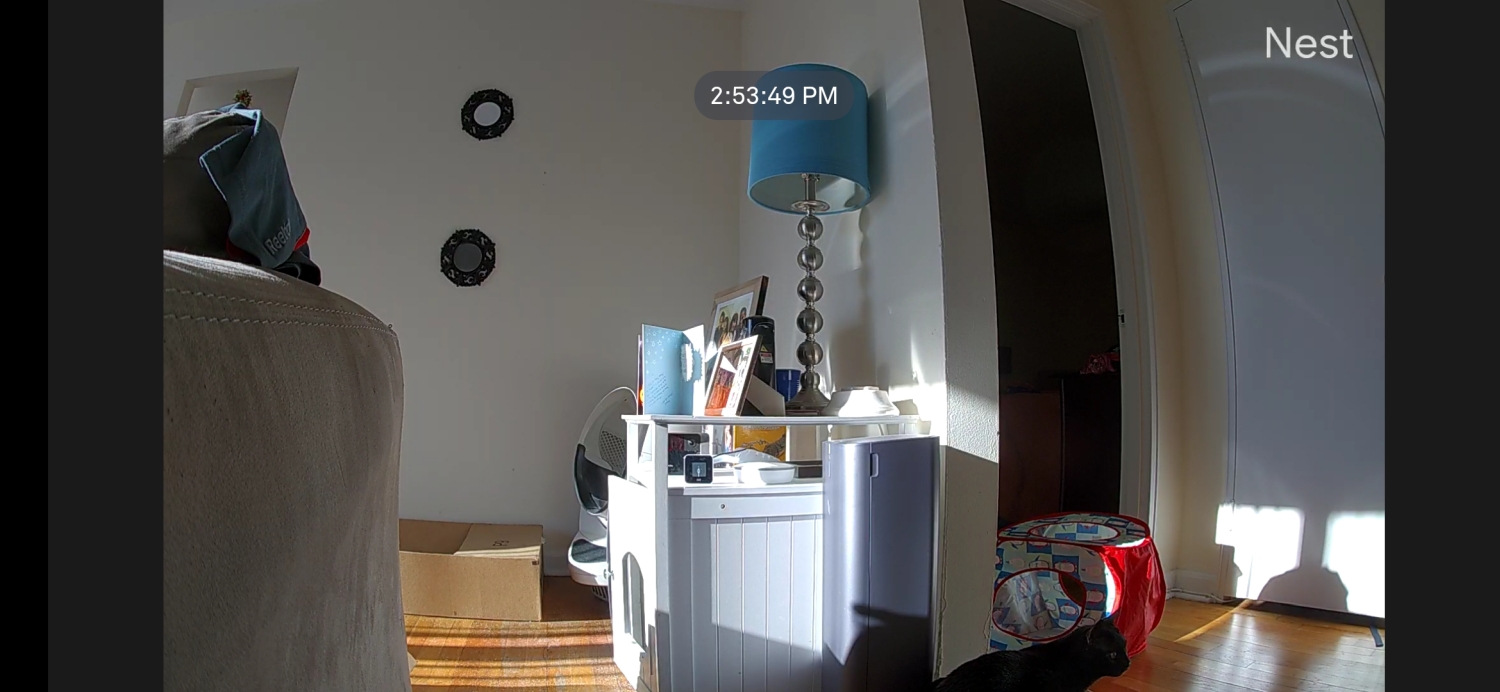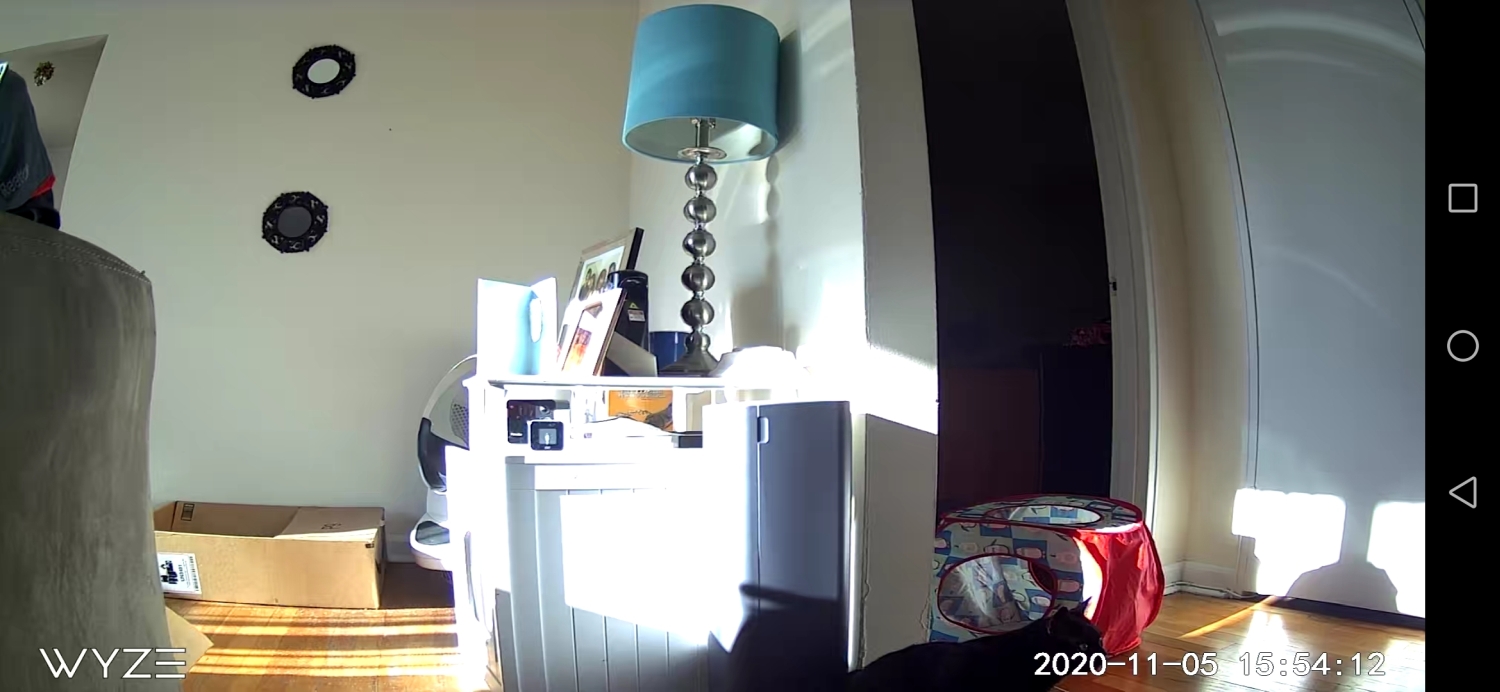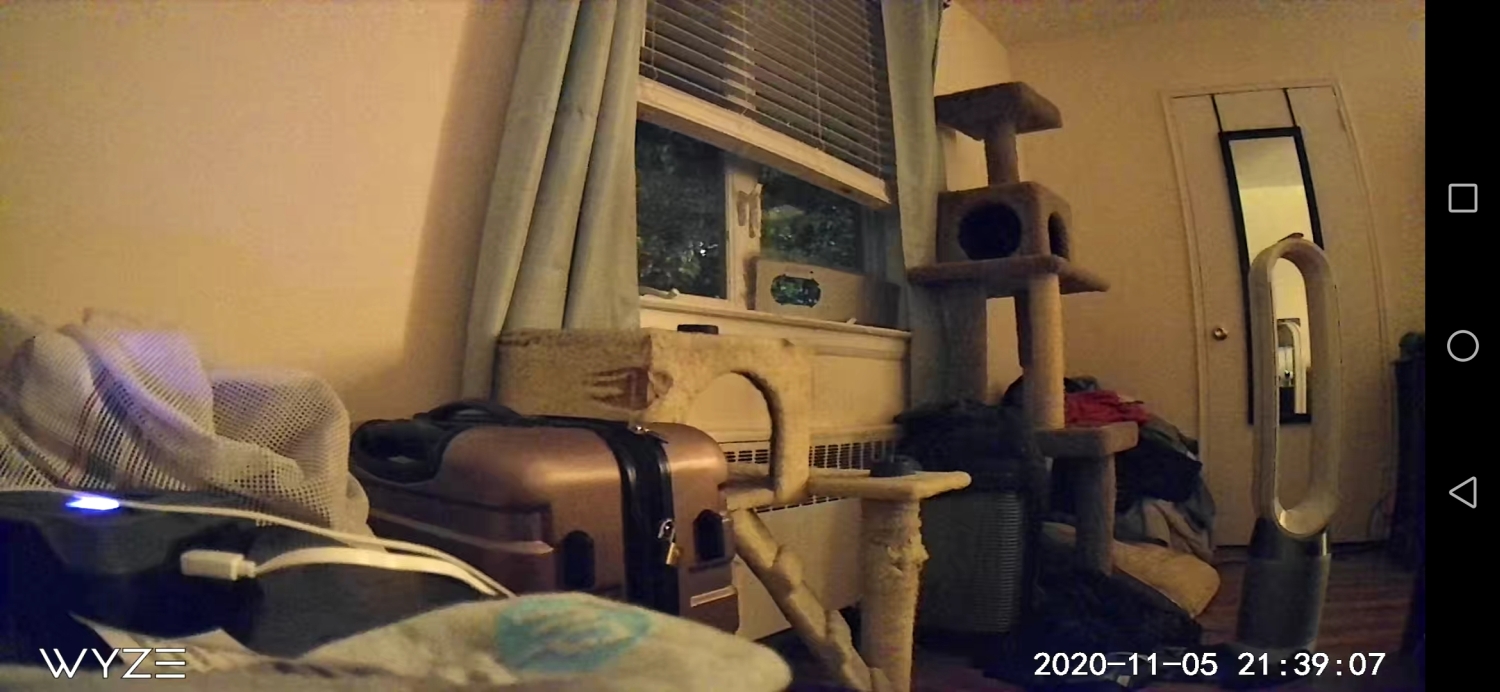After putting the Wyze Cam v3 through its paces, it made me think more about what exactly you’re getting from a high-end, pricey security camera for the home. Seriously, $20 is almost unheard of for any camera, especially when you consider all the rich features that accompany the Wyze Cam v3, including color night vision, something that has been largely reserved for premium cameras such as the Arlo Pro 3.
In comparison, I’ve also been using the Google Nest Cam IQ Indoor for a little under a year now. Sure, it’s been bred to work cohesively with the Google Home ecosystem, but it costs $300. Is that huge gap in price between it and the Wyze Cam v3 really justified?. I know I’m not the only one with this dilemma, so here’s what I found.
Specifications breakdown
| Wyze Cam v3 | Google Nest Cam IQ Indoor | |
| Cost | $20 | $300 |
| Camera | CMOS Starlight sensor 1080p video resolution | 1/2.5-inch, 8-megapixel (4K) color sensor with 12x digital zoom |
| Field of view | 130° | 130° |
| Operating temperature | -5°F to 113°F | 32° to 104°F |
| Connectivity | 2.4GHz Wi-Fi | 802.11a/b/g/n/ac (2.4GHz/5GHz) 2×2 MIMO Wi-Fi; WEP, WPA, WPA2 encryption supported |
| Night vision | IR Lights: 4×940 nm, 4×850 nm
Day/Night Vision Color night vision |
High-power infrared LEDs (940 nm) with IR cut filter |
| Storage | microSD card slot | none |
| Service cost | Cam Plus
$1.25 per camera per month |
Nest Aware
$6/month covers all you Nest cameras, speakers, and displays |
Image quality disparity
Besides the obvious function of being able to protect and watch over our homes, security cameras need good image and video quality to serve any meaningful purpose. For the average person, both cameras will suffice, but that’s only on a superficial inspection.
The quality from the Wyze Cam v3 is acceptable, delivering crisp details that allow me to observe specifics about someone in the frame — like what they’re wearing and any distinctive facial features. However, this is where the Google Nest Cam IQ Indoor shows its superiority . For starters, the 4K sensor does a nice job of cleaning up fine details to allow me to read words on a package, which is something I can’t distinguish with the Wyze Can v3.
- 1. Google Nest Cam IQ Indoor dynamic range
- 2. Wyze Cam v3 dynamic range
There’s also the matter of handling dynamic range. In areas where harsh light is reflecting off surfaces, they appear washed out in the Wyze Cam V3’s footage, whereas the Google Nest Cam IQ Indoor perfectly casts an even exposure throughout the shot. In doing this, details in the highlights are maintained. This is without question where I see the biggest disparity between the two, so if you care about image quality, the Nest Cam IQ Indoor is untouchable.
The rise of color night vision
Score a win for the Wyze Cam v3 in this category because it’s probably the cheapest camera I know of that offers color night vision. It’s a feature we’re seeing more frequently, thanks in part to the additional details that can be obtained over traditional black-and-white night vision. Don’t get me wrong, the Nest Cam IQ Indoor, which lacks color night vision, is no slouch when the sun goes down, but the difference is hardly noticeable between the two when it comes to standard night vision.
- 1. Google Nest Cam IQ Indoor without night vision
- 2. Wyze Cam v3 color night vision
But the Wyze Cam v3 takes it to another level with the addition of color. It’s one thing to discern an object or a person, but it’s a totally different thing when you’re able to discern colorc — like the shade of their shirt or hat they’re wearing. It’s details like these that can be beneficial in providing authorities with valuable information about an intruder.
Local storage and the cloud
I never had a desire to use local storage since I’ve come to rely on cloud storage. However, after testing out numerous cameras with the option, I have a deeper affinity for having it in all cameras. On one hand, there’s that added sense of privacy knowing that videos remain local — and not uploaded to the cloud, where the risk of them being compromised becomes greater.
Beyond just saving clips whenever the Wyze Cam v3 kicks on due to motion or sound detection, I’ve come to like how it can be arranged to continuously record and save clips. It’s very similar to the dash cam in my car, where it keeps on recording footage continuously until the microSD card is full — at which point, it overwrites the oldest footage.

You don’t have local storage as an option with the Google Nest Cam IQ Indoor, but I hope Google realizes its importance for future iterations of the cam. I certainly have more trust in Google protecting my clips in the cloud, more so than Wyze perhaps. Despite the talk about encryption with footage uploaded in the cloud, there’s just still something that holds me back from fully trusting it. Conversely, Google isn’t shy about how it takes privacy more seriously. In order to keep data secure, the company leverages AES 128-bit encryption, TLS/SSL protocols, and two-step verification.
Established brands are unlikely to cut the cord
What do I mean by cutting the cord? Well, take the automatic dispensing pet feeder I’ve had for a few years from Petnet. In the spring, the service became iffy — resulting in the-pet feeder becoming inaccessible. Eventually, the company had to shut down due to the strain of the coronavirus COVID-19 pandemic.
It’s one of many examples when smart home devices become “dumb” in an instant, or worse yet, nothing more than a heavy paperweight. Best Buy’s own Insignia smart home brand is another example of how companies can leave its users high and dry. When you spend so much on a device, you expect it to function, but that’s not always the case.
The chances of something like that happening to the Google Nest Cam IQ Indoor are slim. You can sleep well knowing that the camera will continue to function normally. Even though it’s possible that an unfortunate fate may befall Wyze, the smaller company has been growing in the last year alone, so there’s confidence that the lights will be kept on for a long, long time.
Secondary features
I feel as though both cameras do a decent job of informing about events in the home. Whether it’s motion detection or sounds, both manage to keep me up-to-date about the happenings in and around my apartment. Two-way audio is pretty standard, and is something you’ll find on both cams. However, there are other features that add to the Nest Cam IQ Indoor’s higher cost.

Not only is it a security camera, but it doubles as a smart speaker powered by Google Assistant. It does everything that the Nest Mini does, so it’s useful in the sense that I can perform voice actions to interact with my smart home — such as turning off the lights or asking about my schedule for the day. Actions such as those are just easier to ask Google Assistant than to perform on my smartphone.
There’s also the close-up tracking view that allows the Nest Cam IQ Indoor to zoom on a subject as they’re moving around. Since it’s using a 4K sensor, there’s not as much degradation in the video’s quality. You can even use it to monitor a specific area of a scene by setting the zoom level. The difference between this and a digital zoom on the Wyze Cam v3 is noticeable. Finally, the Nest Cam IQ Indoor can recognize faces.
Service costs
It’s been a common practice for many security cameras to offer subscription services that serve two purposes: Cloud storage for video footage and enhanced features. You really need to sign up for it if you want to tap into the full potential of the Google Nest Cam IQ Indoor, because if you don’t, detection notifications are isolated to still images — it won’t save short clips. When you sign up for Nest Aware, a $6 per month subscription that covers all Nest devices, it unlocks advanced features such as person detection, activity zones, 30 days of video history, and sound detection for alarms. Without Nest Aware, the camera is effectively nothing more than a snapshot-grabbing camera for all motion and sounds.
Wyze does better in this regard, given that if you don’t sign up for its services, you’re still getting cloud storage — limited to 12-second clips for up to two weeks of history. There’s also still sound detection for alarms from smoke and carbon monoxide detectors. The only downside is that its subscription service, Wyze Cam Plus, covers only a single camera for $1.25 per month. It’s certainly not a huge cost looking at the figure, but it adds up if you plan to have multiple cams in the home. Similar to Nest Aware, Wyze Cam Plus offers advanced detection features for people, vehicles, and pets.
Savings and the long-term prospect
The biggest advantage of going with a pricier camera is video performance. The Google Nest Cam IQ Indoor has the Wyze Cam v3 beat when it comes to video performance, offering better details, sharpness, and dynamic range. However, you can’t discredit what Wyze has accomplished with the $20 price of the Wyze Cam v3. For the same cost as buying a single Nest Cam IQ Indoor, I can have 15 Wyze Cam v3 units around my apartment.
The savings in the hardware is undeniable, but companies are banking on the margins from subscription services to make up the difference. That’s evident here because 15 cams with Wyze Cam Plus equates to $18.75 per month — or $225 annually. Google’s Nest Aware is a flat rate of $6 per month that covers all cameras, equaling $72 annually. Then again, this comparison is at the extreme end of the spectrum for most people.
Cheap cameras still give me pause about buying them, mainly due to concerns about the service potentially being cut and how it’s able to provide security and privacy with my footage stored in the cloud. I’m less likely to trust a company that hasn’t established itself. However, Wyze has built a solid reputation over the last year to win over my confidence. Add to that all the features packed into its new camera, like color night vision and sound detection for alarms, and it has redefined my expectations on what’s necessary for a basic camera.







